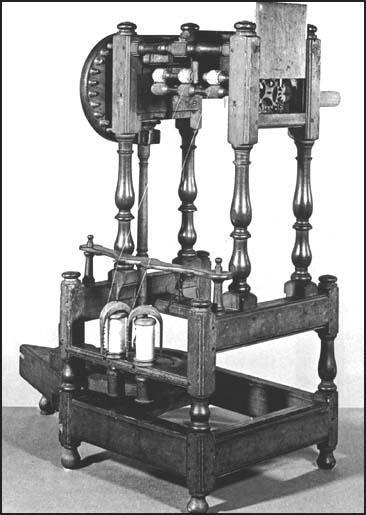The Water Frame
In 1762, Richard Arkwright, a wig-maker from Preston, heard about the attempts being made to produce new machines for the textile industry. Arkwright met John Kay, a clockmaker from Warrington, who had been busy for some time trying to produce a new spinning-machine with another man, Thomas Highs. Kay and Highs had run out of money and had been forced to abandon the project.

Richard Arkwright was impressed by John Kay and offered to employ him to make this new machine. Arkwright also recruited other local craftsman to help, and it was not long before the team produced the Spinning-Frame. Arkwright's machine involved three sets of paired rollers that turned at different speeds. While these rollers produced yarn of the correct thickness, a set of spindles twisted the fibres firmly together. The machine was able to produce a thread that was far stronger than that made by the Spinning-Jenny produced by James Hargreaves.
The Spinning-Frame was too large to be operated by hand and so Richard Arkwright had to find another method of working his machine. After experimenting with horses, Arkwright decided to employ the power of the water-wheel. In 1771 he set up a large factory next to the River Derwent in Cromford, Derbyshire. Arkwright's machine now became known as the Water-Frame.
